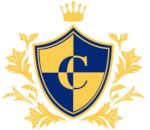Spain’s state schools have undergone profound changes in the last decade and standards, which were low, are now the equal of those in most of the rest of Europe. State education is ultimately the responsibility of the Ministry of Education and Science (Ministerio de Educación y Ciencia), although the 17 autonomous regions now have responsibility for their own education system (including higher education).
State education is free, but parents must usually pay for school books, which are expensive, although many town councils partially or completely subsidise purchases in certain cases, school supplies, and extra-curricular activities such as sports and arts and crafts. Pupils usually go to local village (pueblo) nursery and primary schools, although attending secondary school may entail travelling long distances (buses are usually provided).
School levels in Spain
For most Spanish children, school starts with nursery or pre-school (preescolar), from around the age of three or four (places for three-year olds are available in many regions). Compulsory education (escolaridad obligatoria), termed the basic general education (Educación General Básica/EGB), begins at six years of age in a primary school (escuela primaria) and lasts for six years. At the age of 12 (equivalent to Year 8 in the UK and sixth grade in the US), pupils move on to secondary education (educación secundaria obligatoria/ESO) for the next four years. When they’re 16, and if they’ve completed the four years, students are awarded a graduado en educación secundaria certificate and may attend a higher secondary school (or the same school in some cases) to study for their baccalaureate leading to university entrance. Less academically-gifted pupils who haven’t successfully completed four years secondary education are awarded a school certificate ( certificado de escolaridad). At 16, students may attend a vocational school (formación profesional) providing specialised training for a specific career.
A general criticism of Spanish state schools made by many foreigners is the lack of extra-curricular activities such as sport, music, drama, and arts and crafts. State schools don’t have school clubs or sports teams and if children want to do team sports they must usually join a local club. However, sports and other activities are often organised through parents’ and sports associations. Fees are low and activities usually take place directly after school.
Sending your children to a Spanish state school
Attending a state school helps children integrate into the local community and learn the local language, and is highly recommended if you plan to remain in Spain indefinitely. Although it may not appeal initially, given the choice many foreign children prefer to attend a Spanish school and become part of the local community. Note that while it’s fairly easy to switch from a state school to a private school, the reverse isn’t true. If you must move a child from a private school to a state school (e.g. due to financial reasons), it can be difficult for a child to adjust, particularly a teenager. Having made the decision to send a child to a state school, you should stick to it for at least a year to give it a fair trial, as it can take a child this long (or longer) to fully adapt to a new language, the change of environment and the different curriculum. If you choose to send your child to a Spanish school you should learn to speak Spanish well enough to communicate with your child’s teachers – few Spanish teachers speak English.
There are also special state schools in Spain for pupils with special education needs, e.g. learning difficulties due to psychological, emotional or behavioural problems and slow learners. However, pupils are taught in special education units or schools only when their needs cannot be catered for in a mainstream school.
In Spain, children must attend a state school (primary or secondary) within a certain distance of their home, so if you have a preference for a particular school, it’s important to buy or rent a home within that school’s catchment area. Town halls and provincial Ministry of Education offices can provide a list of local schools at all levels. In some rural areas, there’s little or no choice of schools, while in Madrid and other cities there are usually a number of possibilities. Naturally, the schools with the best reputations and exam results are the most popular, and therefore the most difficult to gain acceptance to. You should plan well ahead, particularly if you wish your child(ren) to be accepted at a superior school.
Enrolment
State schools have an annual quota for pupils and places are allocated on a first-come, first-served basis. The enrolment period usually lasts for two months early in the year e.g. February to March or April to May, although it varies from region to region. Individual schools will provide exact dates. The process of enrolment depends on the age of your child, but may require an interview and in rare cases an examination. To enrol a child in a Spanish state school you must provide the following documents:
- Your child’s birth certificate or passport (original and photocopy), with an official Spanish translation (if necessary) and the parents’ passports (originals and photocopies).
- Proof of immunisation.
- Proof of residence (empadronamiento) from your town hall (ayuntamiento).
- Proof of verification, if applicable (see below).
- Two passport-sized photographs (for a student identity card and school records).
Verification
If the child is going to start a Spanish secondary school in the third year of ESO (around age 14) you must also present proof that your child’s education record has been verified by the Spanish Ministry of Education. The process is known as homologación or convalidación. You must complete the official form provided by the Ministry, which is available from Spanish consulates and embassies abroad, from regional departments of education or directly from the Ministerio de Educación y Ciencia, C/Alcalá 36, 28071 Madrid ( 902-218 500, www.educacion.gob.es ). The form is downloadable from the website in the section on Títulos Oficiales and Homologación (the form is referred to as the modelo oficial). You should also submit your child’s school record book and/or exam qualifications, plus his birth certificate.
If possible, this process should be completed before arriving in Spain, as a child may not be accepted at a school until the official papers (confirming verification) have been received and stamped by the Spanish Department of Education. The process takes around three months, although if you show a school proof of the Ministry’s receipt of the verification documents, your child should have no problems being accepted.
School Hours in Spain
School hours vary from school to school, but are usually from 9am until 4pm with a one-hour break for lunch, although an increasing number of schools don’t have a lunch break and finish classes at 2pm. Lessons are usually divided into teaching periods of 45 minutes. Some schools offer school lunches, although many children bring a packed lunch or go home for lunch if they live nearby. Most schools provide a subsidised or free bus service to take children to and from their homes in outlying regions. Some schools are now opening early (e.g. at 8am) and providing activities after school until 5 or 6pm in an attempt to make childcare provision easier for working parents.
Primary School
Compulsory education (escolaridad obligatoria), also called ‘basic general education’ (educacion general básica/EGB), begins at the age of six in a primary school (escuela primaria) and lasts for six years. Primary school is split into three cycles: First Cycle (primer ciclo/1er ciclo), years 1 to 2; Second Cycle (segundo ciclo/2º ciclo), years 3 to 4; and Third Cycle (tercer ciclo/3er ciclo), years 5 to 6.
The primary curriculum includes natural and social sciences (conocimiento del medio), Spanish (lengua) and an autonomous language (if applicable), literature, mathematics, arts (dibujo y plástica), physical education and a foreign language (usually English or French), which is compulsory from the second cycle, although many state schools now offer English from the age of six. Catholic religion is optional and when your child starts school you’re asked whether you want your child to attend religious classes. Alternatives may include extra-reading, ethics or theatre studies. Under the new education reforms (LOE), all pupils will have daily reading time and pupils in the third cycle (years 5 and 6) will also study a new subject, Educación para la Ciudadanía (Education for Citizens), covering moral and social values such as sexual equality and care of the environment.
In most schools, pupils have three evaluations (evaluaciones) each year. If a child fails to achieve the required standard set for a particular cycle, he may be required to repeat the previous year unless he can show considerable improvement in the autumn (many private and state schools offer ‘recovery’ classes during the summer holidays to help pupils catch up). The opinion of the teachers, tutors, inspectors and the sector’s psychological and pedagogical team are taken into account when deciding whether a pupil must repeat a year. Pupils aren’t required to repeat more than one year during their primary education.
Secondary School
Compulsory secondary education (enseñanza secundaria obligatoria/ESO) was created in 1990 for pupils aged 12 to 16 and completes their compulsory education. It provides pupils with more specialised training than their previous education and prepares them for the baccalaureate (see below) or vocational training. The four years of compulsory secondary school are divided into two, two-year cycles, the curriculum containing compulsory and optional subjects. Compulsory subjects during the first three years include a common curriculum of six subjects (seven in regions with an autonomous language).
Compulsory subjects are natural sciences, Spanish language and literature, geography and history, mathematics, physical education and a foreign language. Students can choose the remaining two subjects from Educación para la Ciudadanía (moral and social education), art, music, IT and a second foreign language. In the fourth year, six subjects – Spanish language and literature, mathematics, social sciences, a foreign language, physical education and ethics and civic education (educación ético-cívica) – are compulsory and students must choose three of the following subjects: biology and geology; fine and visual arts; physics and chemistry; IT; Latin; music; a second foreign language; and technology. Students in regions with an autonomous language must also study the regional language and literature. The Catholic religion is an optional subject in all four years.
As with primary education, a pupil can be required to repeat a year if he hasn’t passed the end of term exams (pupils who fail three or more subjects in the end of term exams must repeat the year) or the autumn repeats, and pupils aren’t required to repeat more than two years in secondary education. The LOE intends to make provision for small groups to help pupils who struggle academically – all pupils currently study the same topics at the same level.
Upon completion of ESO, pupils who have achieved the set standards are awarded a ‘graduate of secondary education’ (graduado en educación secundaria) certificate enabling them to study for the baccalaureate or undergo specialised vocational training (see below). This certificate is a basic requirement for most jobs in Spain. All pupils, whether or not they’ve achieved the course objectives, receive a document stating the school years completed, the marks obtained in each subject, and recommendations regarding their academic and vocational future.
Under the LOE, Pupils aged 16 to 21 who have repeated two years of ESO study and failed to pass a further year are eligible for the Professional Qualification Programme (Programa de Cualificación Profesional) whose aims are to provide these pupils with a further opportunity to gain their ‘graduate of secondary education’ certificate or to gain other professional qualifications to allow them to get a job.
This article is an extract from Living and Working in Spain.
Click here to get a copy now.



